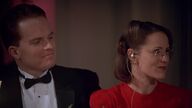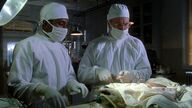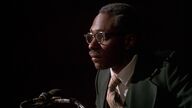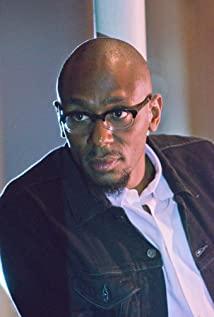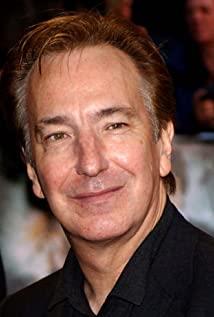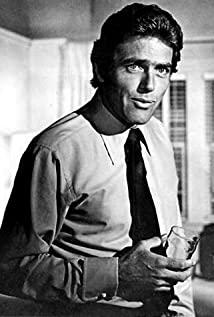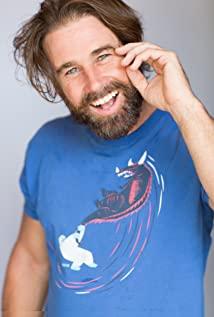If you made a mistake, would you correct it? But if it is God's fault, who will correct it?
At the end of the 19th century, the medical community generally believed that a child with bruising due to a congenital heart malformation - known as a "blue baby" - was beyond the limits of what could be corrected by surgery, and perhaps it was a death that had already been determined by the creator. .
The beginning of the movie is not those blue babies, but a carpenter Mr. Thomas, who is also a clue character throughout the whole story. Perhaps this is related to Thomas's autobiography published in his later years. Thomas volunteered to study medicine. Because of lack of money, he worked around to save money. By chance, Thomas became an assistant in Blalock's laboratory. In the beginning, he was only responsible for cleaning work, but it didn't take long for him to upgrade. Of course, this is another young man with a clear goal and a smart and eager to learn who was discovered and appreciated, and then studied hard under the help and guidance. Of course, the learning results are quite good. Inspirational story. In short, Thomas started from scratch, chemistry, physiology...and all kinds of experimental techniques. Thomas's role in the laboratory has grown, and he has become an indispensable right-hand man for Clarlock. Of course there were contradictions and frictions during this period, but I believe it was the common belief that kept them fighting side by side for more than ten years.
Fast-forward to 1941, and Blalock was hired as chief of surgery at Johns Hopkins University Hospital for his research and contributions in shock. Of course more than one hospital wanted to poach Blalock, but only Johns Hopkins University Hospital agreed to Blalock's request to offer Thomas a position. Because Thomas is black, so, you know. But also because Thomas is important enough.
When Tasig finds Claylock and proposes her idea, they are destined to make history together. Claylock was not the first person Tasig found, but perhaps it can only be said that history chose Claylock. Tassig, who specializes in paediatric cardiology, has seen newborns turn blue and die many times. She thought that if a new tube could be created to increase blood flow to the pulmonary artery, it would improve the symptoms of cyanosis in these children. But it is not easy to find such a surgeon who dares to try, because the heart is a restricted area.
That's how it works in the movie. At the banquet, Tassig said, "Tonight a baby is bound to die, just because no one has the courage to try surgery on this condition." But someone immediately retorted, you can't move your heart, that's the basic law. It is really not an easy thing to say to break the restricted area of the heart, but there are always people who want to complete this ice-breaking move. "There must be some way to get more blood to the lungs," Claylock said. "Maybe there's a way to avoid interfering with the whole circulation." "If we just focus on the pulmonary arteries," Thomas said. Classical palliative surgery, the original idea for BT shunt (named after Blalock and Tasig). But in fact, this is not an equal discussion, because in this discussion, Thomas's identity is only a banquet waiter.
While this time-honored spell makes people remember Blalock and Tassig, Thomas's role is definitely not to be ignored. At that time, all of Claylock's experimental ideas were completed by Thomas, and even the first operation they performed with dogs was completed by Thomas and Claylock as assistant.
Originally, before the formal operation, several animal experiments should be carried out by Kleilock, but the patient's condition is changing rapidly, and time has not given him more time to prepare. This is clinical work, and you will never know whether the patient's condition is Can allow you to prepare a little more. So it can be said that Claylock is rushing ducks to the shelves. Most people are not optimistic about his challenge. Even among so many surgeons at Johns Hopkins University Hospital, only Rommel and Cooley took the initiative to participate. .
The operation was finally about to take place, during which Claylock asked Thomas to stay by his side, and of course the operation was successful, when the baby's lips and cheeks turned from cyanotic blue to a delightful pink, it was the most beautiful thing in the world. wonderful color.
There is a device named after Blalock in BT shunt-Blalock pliers. I think it should be the kind of pliers Thomas made in the film. After all, Thomas used to be a carpenter, so it is possible that such tools were made by Thomas Sex should be bigger. I think without the ingenious Thomas, perhaps this ice-breaking move would have been much more difficult, and perhaps the first operation might not have been successful.
Thomas's efforts finally paid off. He was awarded an honorary doctorate from Johns Hopkins University and served as the head of the surgical laboratory. Although he did not go to medical school for a day, his contribution in life was not inferior to those of Dr. They have even surpassed them in some respects.
"Ventricular septal defect, pulmonary stenosis, aortic overriding, right ventricular hypertrophy." This is a description of tetralogy of Fallot, and I believe that all medical students will not be unfamiliar with this description. In 1777 Sandyford described a case of such a severe heart malformation after an autopsy. In 1887, doctor Farrow summarized this type of cases, and proposed its anatomical points and diagnostic criteria. It was not until 1944 that there was a surgical method that could prolong his life and improve his quality of life-BT shunt. This period has experienced 167 years. Those children with congenital heart malformations can finally cry with confidence without hypoxia and cyanosis.
God's mistakes can finally be corrected.
So we call it a miracle.
View more about Something the Lord Made reviews



